Mounting the hind leg bones of a cave lion for Buxton Museum & Art Gallery,
Nigel Larkin April 2017.
These sub-fossil bones of the rear leg of a cave lion were generally in very good condition, with no cleaning required other than the issue of grey paint on some bones, described below.
The unidentified putty previously poorly applied to the break in the femur that was used as a substantial gap filer around the break was removed as it was unsightly and non-archival. It was also old, cracked and falling apart. The wooden piece of dowling was also removed. The internal surfaces of the broken edges of the femur were consolidated with Paraloid B72 in acetone at about 10% (this is reversible with acetone). Not only did this improve the strength of the fragile areas of bone but it provides a barrier layer to the plaster of paris that was then applied to make up the missing portions of the bone around the break so that the bone was more robust, less fragile and looked more complete. The plaster was painted out with artists acrylic paints to approximately match the surrounding bone.
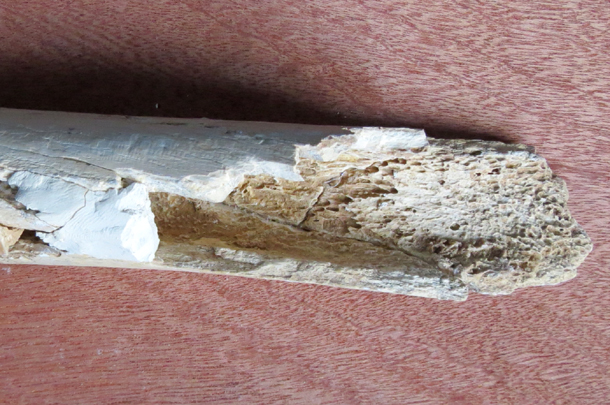
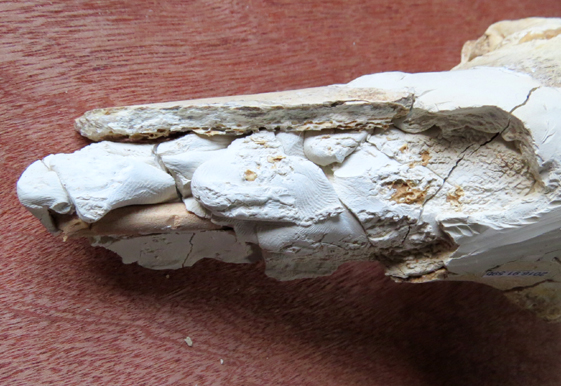
Above, the broken ends of the femur, with portions of old putty still inside.
Below, the rebuilt femur with plaster as a gap filler before being painted.
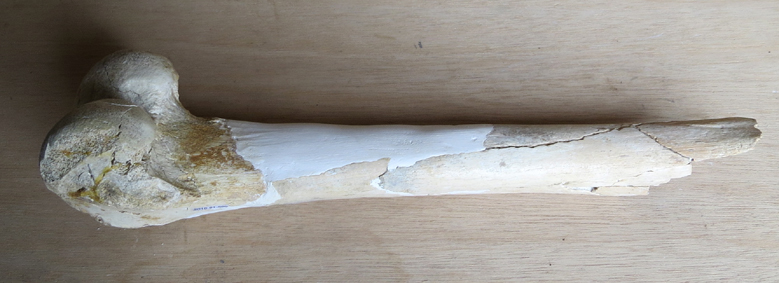
Many of the bones had areas of thick grey or black paint splodged onto their surfaces. This paint was removed with very careful use of a scalpel under a magnifying glass. Old excessive adhesive was removed in a similar fashion. Labels were frequently found to be on the ‘upper’ surfaces of the bones so these were carefully removed and adhered to the underside of the bone in case (with reversible Paraloid B72 adhesive), so that they would be out of sight when on display.
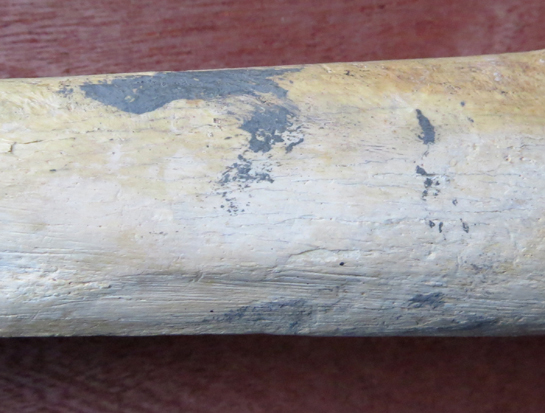
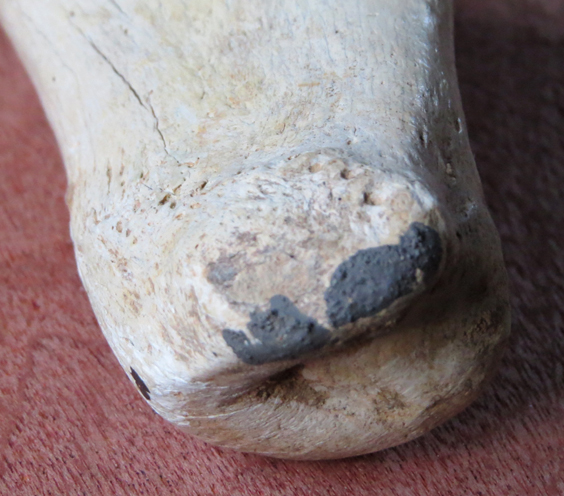
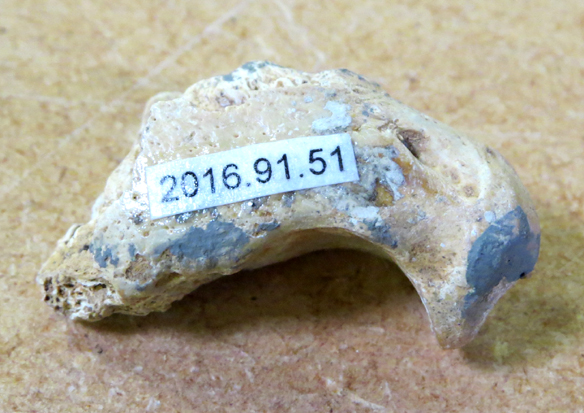
Above, some of the bones with paint on their surfaces.
It was required that the bones were to be displayed articulated in their associated positions as if the lion was crouching. The main part of the mount for the bones was made from a flat steel strip shaped on a forge, with brass rods and flat brass strips soldered together holding the bones securely in place. Three holes were drilled in the lowermost horizontal steel sections and were countersunk so that screws could hold the armature to the base of the display cabinet.
The metalwork was sprayed with ‘ivory’ metal paint to look similar to the bones. The armature was lined with white inert Plastazote foam where the bones would otherwise lay directly on the metalwork.
Below left, the finished metal armature. Below right, the whole limb on display in the gallery.
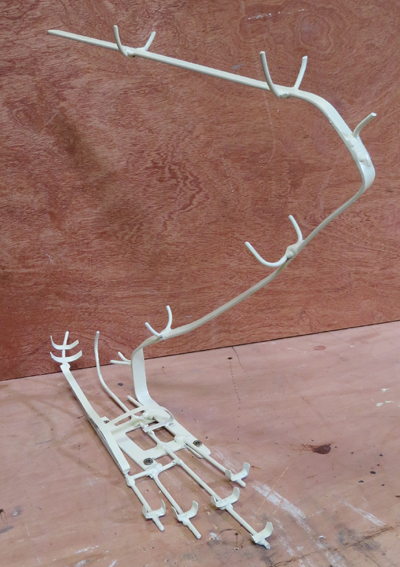
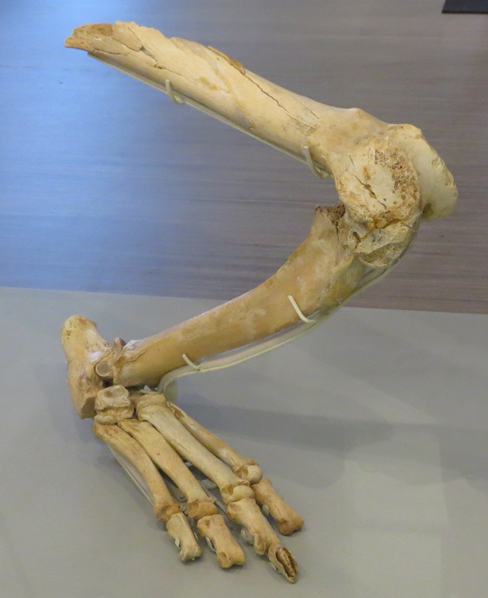
For more details about what we can do for you, or for a quote, please
contact:
enquiries@natural-history-conservation.com
We
are members of the United Kingdom Institute for Conservation of Historic and
Artistic Works